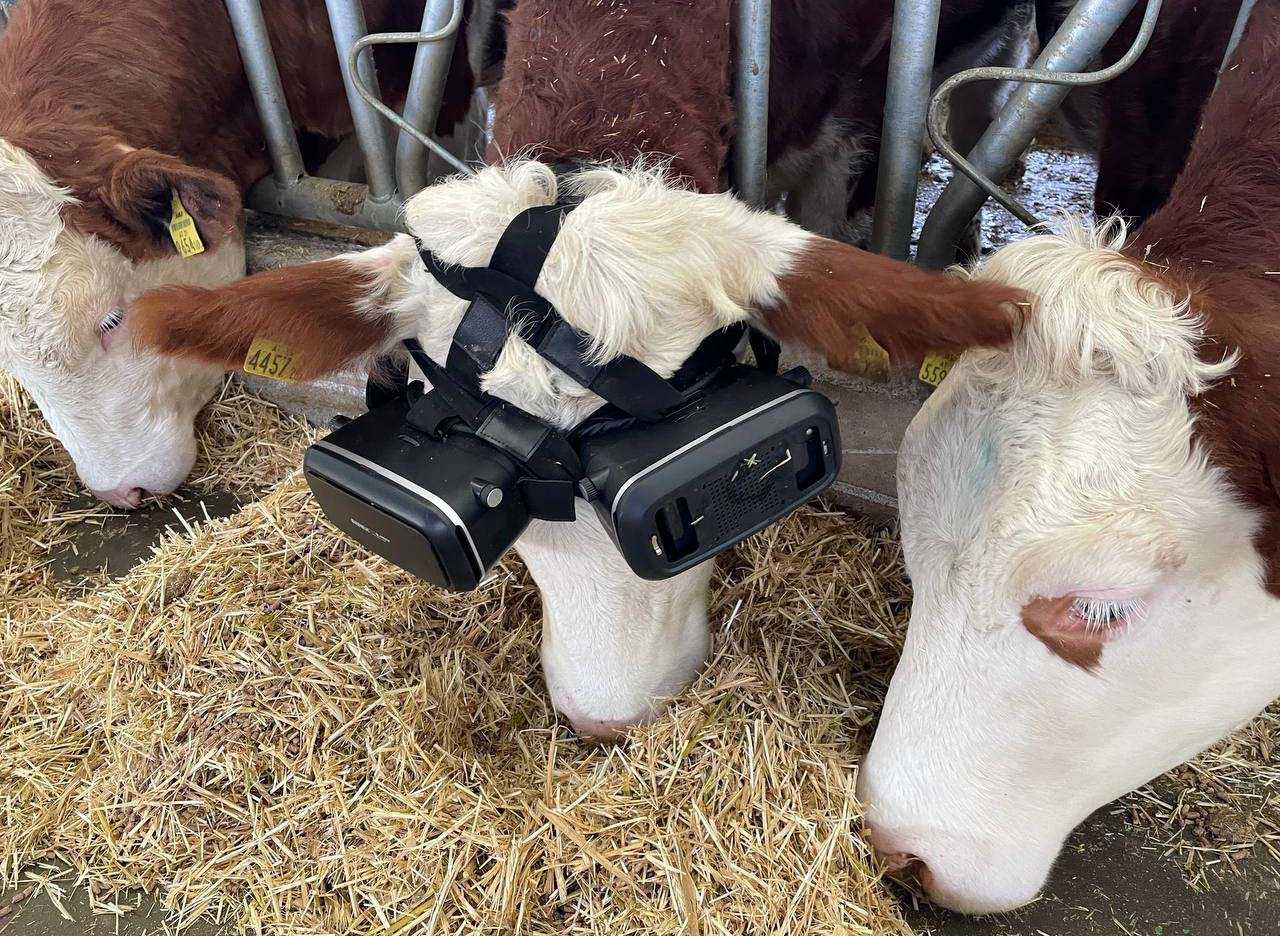VR goggles soothe cows and help Turkish farmer produce more milk

Image Collected
A Turkish farmer is using virtual reality goggles to up his game in farming. His cows wear virtual reality goggles that illuminate green pastures, boosting their mood and milk yield. Izzet Koçak, a cattle breeder from Aksaray in the Central Anatolia region, stumbled upon the idea on social media to help his herd produce more milk, while they are confined indoors during severe winters.
Tricking the cows into thinking they were in an actual pasture, the experiment with the Russian-made devices worked: the milk output of cows rose to 27 litres from 22 litres on a daily basis
The use of VR goggles on cows isn't new, and the concept was developed in Russia. In 2019, a farm outside Moscow fitted their cattle with VR headsets to boost the quality and quantity of the milk they produce.
Moscow's Ministry of Agriculture cited a number of studies, including one from Wageningen University in the Netherlands that said environmental conditions have a significant impact on the health of cows, affecting the quality and quantity of milk produced.
Scotland's Rural College corroborated this with their own study, which states that farmers using different systems to improve livestock welfare boosts cows' emotions and experiences, leading to positive effects on milk yield, according to the ministry.
A team of developers, working with vets and consultants, then came up with oversized and customised VR goggles for the animals. Mr Koçak decided to try the high-tech trick on his cows. He contacted the Moscow company producing the VR glasses and had them shipped.
"As producers, we started to look for an alternative way with the increase in feed and hay prices. Cows in Russia are fitted with virtual reality glasses. We decided to try this in our own business," he said.
Currently in their trial phase, Mr Koçak said the VR goggles have been used on two of their cows, and the yield increase has been noticeable. As part of the second stage, they ordered 10 more of the devices.
If this proves successful, VR goggles will be ordered for the entire herd, he said. Those VR glasses are what you'd expect: they come with speakers to allow cows to listen to "relaxing" music. Other farmers use other techniques, including mood lighting
"These glasses are emotionally good for the animals. We observed that the animals are less stressed. Both of these conditions are reflected in the milk yield, the quality and quantity of milk is increasing," Mr Koçak said.
And even before this new reality, Mr Koçak's herd are already tech-savvy, with chips embedded in their legs that track anything from their milk yield to giving out a warning if they wander off too far.
Latest data from the Turkish Statistical Institute shows that the country's dairy production grew in the first nine months of 2021, with the amount of milk collected from cows up 2.1 per cent year-on-year to 7.7 million tonnes.
However, integrated dairies produced 1.1 million tonnes of drinking milk during the same period, TurkStat added. Cheese production from cow’s milk was around 554,500 tonnes, while yoghurt production was up 1.4 per cent at 855,092 tonnes from 2020.
The global virtual reality market, meanwhile, was valued at $15.81 billion in 2020 and is expected to grow to almost $60bn at a compound annual rate of 18 per cent from 2021 to 2028, according to Grand View Research. It is unclear at this point how much market share cows will be able to graze in the future.
Source: https://www.thenationalnews.com
Tags :
Previous Story
- Adaptive Swarm Robotics Could Revolutionize Smart Agriculture
- Canadian Company to Acquire Brownsburg's CommoditAg
- India re-emerges as rice and wheat exporter
- Young flyboy mans ‘air tractor’ with spray business
- Native American youth grow business ideas during Innoventure...
- MCC's new agriculture program has successful first year
- Coalition of Midwest business leaders pushes for immigration...
- Biden order to strengthen hand of small farmers...